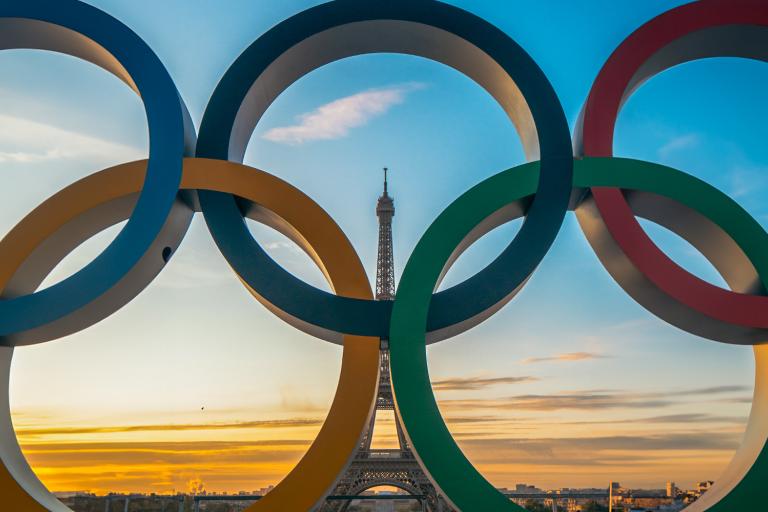Paris Olympics will advance research into weather forecasting and urban meteorology

The research demonstration project brings together meteorological services and universities from around the world, including host country France, Austria, Australia, Canada, China, Sweden, the United Kingdom and the United States of America. It is endorsed by WMO’s World Weather Research Program and Global Atmospheric Watch Urban Research Meteorology and Environment project.
The research project is being run in parallel with the regular forecast and meteorological services being provided by Meteo-France for the duration of the Olympic Games from 26 July to 7 August.
Weather is a key factor in major sporting events. Accurate and reliable forecasts and warnings of temperature, humidity, visibility and wind extremes affect event scheduling, athletic performance and course conditions. They also ensure the safety of athletes, support staff, spectators and transit operations.
Very short-term forecasting and nowcasting are important, especially for the outdoor events.
Urban meteorology
The research demonstration project encompasses all the sites of the Summer Olympics, both around Paris and in coastal areas of the city of Marseilles in order to advance meteorological research on the theme of the “future Weather Forecasting systems at 100m (or finer) resolution for urban areas.” It will especially focus on themes relative to extreme events in summer in cities: thunderstorms and strong urban heat islands, and their consequences.
Dense urban areas, with high-rise buildings and concrete infrastructure, pose challenges for high-resolution numerical weather prediction and they face many environmental risks due to air pollution and weather, climate, and water-related hazards. About 3.5 billion people live in urban areas – a figure which keeps on increasing.
There is therefore growing interest in urban meteorology, which embraces not just simple observations and forecasts of the general weather, but also environmental parameters such as temperature, aerosol concentration, and precipitation.
Previous summer Olympics research projects took place in Sydney (2000) and Beijing (2008), focusing on the nowcasting (forecasts for the minutes and hours ahead) and predictability of thunderstorms at regional scale. However, these state-of-the-art models were not run at resolutions tailored for dense urban areas.
Since then, there have been advances in urban meteorology. For instance, a recent Tokyo Metropolitan Area Convection Study for Extreme Weather Resilient Cities studied extreme storm events with radars and other instruments.
The Paris 2024 Olympics research demonstration project is organized around five scientific questions.
- Nowcasting & Numerical Weather Prediction in cities at about 100m of resolution
- High resolution thunderstorm nowcasting (probabilistic and deterministic) in the urban environment, Urban heat islands and cool areas, air quality, in cities
- Nowcasting and forecast in coastal cities (for the Marseilles site)
- Big data, non-conventional data, and their uses
- How to deliver tailored weather, climate, environmental information at infra-urban resolution?
Numerical Weather Prediction at 100m horizontal scales is needed to accurately capture small-scale atmospheric processes and features. At this scale, NWP models can better simulate the complex interactions between the atmosphere and the Earth's surface, including urban areas, complex terrain (such as mountains and valleys), coastlines, and land-water interfaces. These interactions are crucial for accurately predicting small-scale weather events like thunderstorms, fog, urban heat islands, sea breezes, and mountain-induced precipitation.
There are three main focus areas:
- Air Quality Group
Concentrations of atmospheric pollutants, such as nitrogen oxides and particulate matter, are particularly high in urban areas, with significant spatial heterogeneity. Detailed modelling is needed to better estimate the health impacts of these concentrations. Chemistry and transport models are often used to simulate and predict background concentrations on a regional scale. However, these models cannot account for the wide local variations in concentrations.
As part of the Paris Olympics research project, two intercomparison exercises have been set up. The first concerns regional concentrations during summer heat episodes, when ozone concentrations are high, and the second concerns local urban concentrations. - High resolution modelling (Intercomparison)
Nearly real-time forecasts will be realized by 7 different centers. Among them 7 models will be hectometric (i.e. on a 100m horizontal resolution).
These models will be analyzed in daily meetings during the Olympics and Paralympics period, in a pure forecast point of view and in a retrospective point of view (comparing to observations). These meetings should raise the main advantages and limitations of hectometric models for forecasts compared to well-known kilometric and global scale models. - Social Science Study
This aims to strengthen comprehension of forecasts for large sport event with the objective of understanding the way in which forecasters formulate their advice to decision makers.
There will be interaction with the « Heat and Health in Cities » project characterizing the hazard, but it is also looking at the impacts of exposure to heat on morbidity and mortality, and on the provision of stakeholder information.
- WMO Member:
- France ,
- Austria ,
- Australia ,
- Canada ,
- China ,
- Sweden ,
- United Kingdom of Great Britain and Northern Ireland ,
- United States of America

